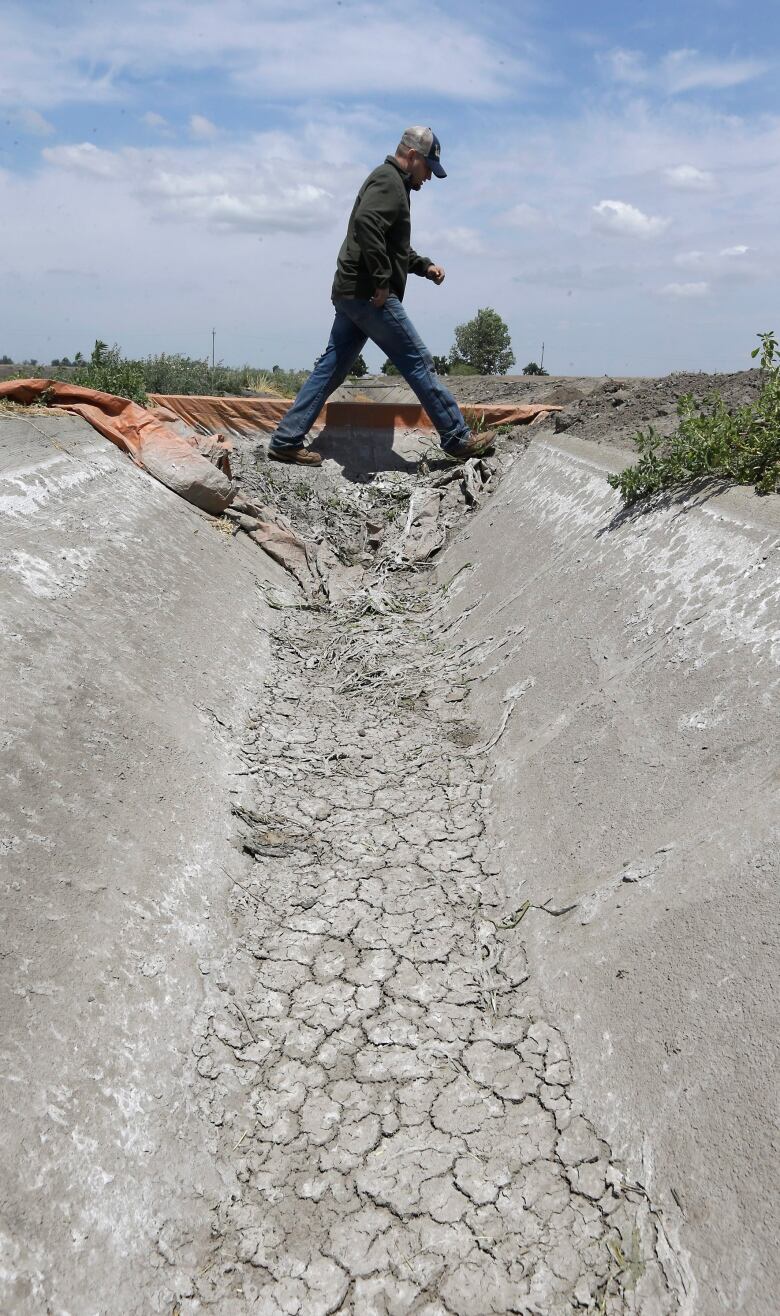Drought-stricken California imposes new water cuts on farmers
Recent restrictions apply to farmers with strongest water rights who were previously spared from rationing

Drought-stricken California on Friday ordered the largest cuts on record to farmers holding some of the state's strongest water rights.
State water officials told more than 100 senior rights holders in California's Sacramento, San Joaquin and delta watersheds to stop pumping from those waterways.
- California drought's newest battlefront is bottledwater
- California drought to squeeze produce prices
- Almond backlash tied to California drought
The move by the State Water Resources Control Board marked the first time that the state has forced large numbers of holders of senior-water rights to curtail use. Those rights holders include water districts that serve thousands of farmers and others.
The move shows California is sparing fewer and fewer users in the push to cut back on water using during the state's four-year drought.
"We are now at the point where demand in our system is outstripping supply for even the most senior water rights holders," Caren Trgovcich, chief deputy director of the water board.
Rights go back more than century
The order applies to farmers and others whose rights to water were staked more than a century ago. Many farmers holding those senior-water rights contend the state has no authority to order cuts.

California already has ordered cuts in water use by cities and towns and by many other farmers.
The move Friday marked the first significant mandatory cuts because of drought for senior water rights holders since the last major drought in the late 1970s.
One group of farmers with prized claims have made a deal with the state to voluntarily cut water use by 25 per cent to be spared deep mandatory cuts in the future.
The San Joaquin River watershed runs from the Sierra Nevada to San Francisco Bay and is a key water source for farms and communities.
Thousands of farmers with more recent, less secure claims to water have already been told to stop all pumping from the San Joaquin and Sacramento watersheds. They are turning to other sources of water, including wells, reservoirs and the expensive open market.
Last curtailmentof senior water rightswas in 1970s
Some farmers have built their businesses around that nearly guaranteed access to water.
Jeanne Zolezzi, an attorney for two small irrigation districts serving farmers in the San Joaquin area, says she plans to go to court next week to stop the board's action. She said her clients include small family farms that grow permanent crops such as apricots and walnuts without backup supplies in underground wells or local reservoirs they can turn to when they can't pump from rivers and streams.
"A lot of trees would die, and a lot of people would go out of business," said Zolezzi. "We are not talking about a 25 per cent cut like imposed on urban. This is a 100 per cent cut, no water supplies."
California water law is built around preserving the rights of such senior-rights holders. The state last ordered drought-mandated curtailments by senior-water rights holders in 1976-77, but that order affected only a few dozen rights holders.
Who has senior water rights inCalifornia and why
Who are thesenior water rights holders?
More than half are corporations such as power companies that use water for hydroelectric dams. Claims are also held by rural irrigation districts that serve thousands of farmers throughout Central California and the Sierra Nevada foothills. Water departments in San Francisco and Los Angeles are among the biggest users, although those agencies have multiple sources of water and have yet to be curtailed.
How did they get water rights?
Establishing an early right to California water was as simple as going ahead and diverting it. The paperwork came later. San Francisco got the Sierra Nevada water that fed its lush gardens by tacking a handwritten notice to a tree in 1902. The state started requiring applications and monitoring consumption after 1914 but exempted previous claims from the process.
Who monitors waterrights?
The State Water Resources Control Board oversees the water rights system and decides when conditions are too dry to meet demand. Every three years, it requires senior water rights holders to report how much water they have diverted, used and conserved. Since regulators lack widespread remote sensors or meters, they depend largely on the honour system to guard against illegal uses and conduct field inspections in response to complaints.
How much water do they use?
Trillions of gallons a year, but no one knows exactly how much. An Associated Press investigation last year found the data riddled with obvious errors. State water officials concede they need better real-time monitoring of flows and diversions. As it is, they generally enforce cutback orders when someone complains.
Why do they have special status?
Much of the parched West was developed around the principle that water goes to those who claimed the limited resource first. Unused water may be sold or transferred. But California is unusual among Western states, in that it doesn't monitor senior rights holders as closely as it does junior rights holders.












_(720p).jpg)


 OFFICIAL HD MUSIC VIDEO.jpg)
.jpg)



























































































